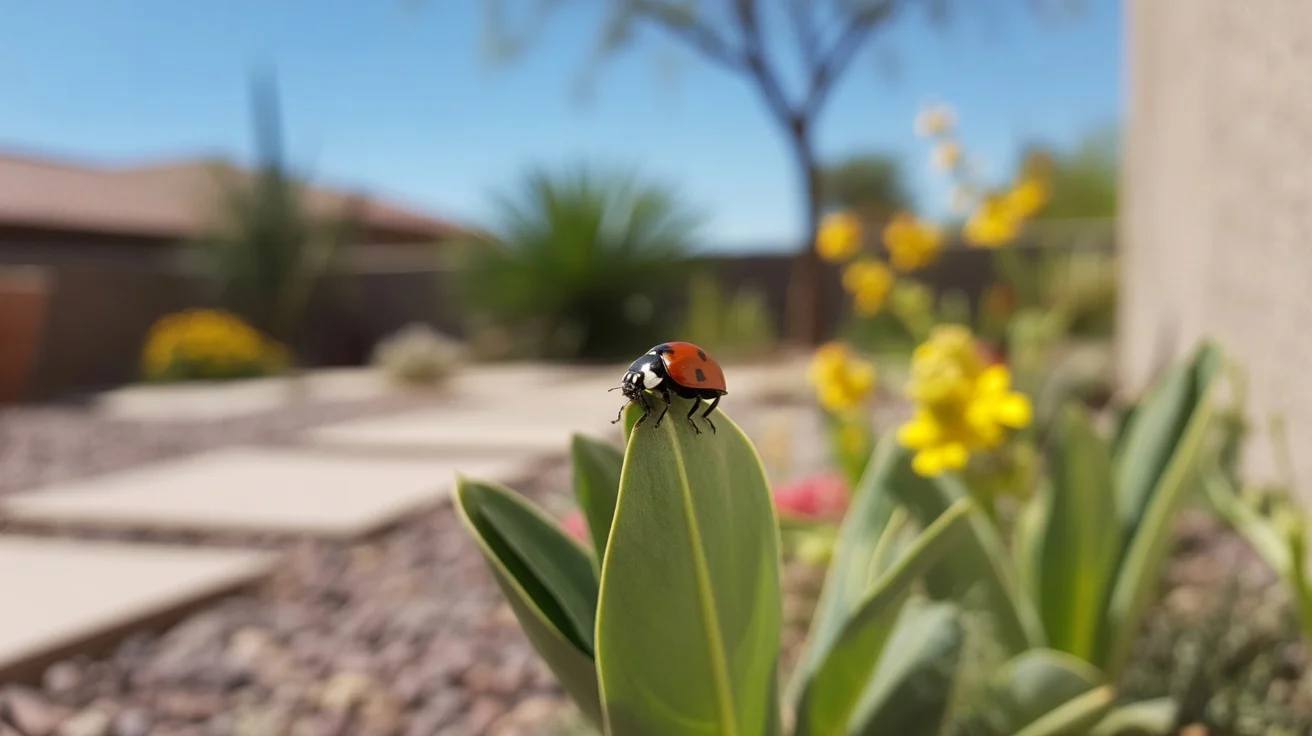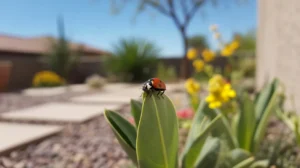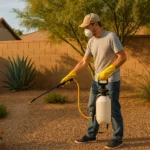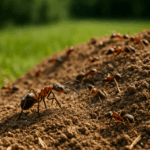As spring brings warmer weather and lush new growth to Chandler yards, it can be tempting to let your guard down when it comes to pest control. After all, everything looks so healthy and vibrant – what could possibly go wrong? Unfortunately, this “green-up trap” is exactly what many common yard pests are waiting for. With a few smart strategies, though, you can enjoy the beauty of spring while keeping insects and critters at bay.

Understand the Green-Up Trap
The term “green-up trap” refers to the explosion of tender new growth that occurs in spring, especially after a wet winter like we had this year in Chandler. All those fresh leaves, buds, and shoots are irresistible to plant-munching pests like aphids, whiteflies, and caterpillars. Even pests that don’t eat plants directly, like ants and crickets, are drawn to yards with lush vegetation because it provides shelter and attracts their prey.
At the same time, the mild spring weather allows pest populations to boom. Insects that spent the winter dormant in leaf litter, soil, or wood piles begin reproducing rapidly, while rodents and other critters become more active as they search for food and mates. It’s the perfect storm for a pest invasion if you’re not prepared.
Start with Prevention
The best way to manage spring pests is to stop them before they get established. Begin by thoroughly cleaning up your yard, especially in areas where pests might overwinter. Remove dead leaves, prune away dead branches, and keep mulch pulled back a few inches from your foundation. Eliminate standing water and fix any leaky irrigation to avoid attracting mosquitoes and gnats.
Next, take steps to bolster your yard’s natural defenses. Avoid over-fertilizing, which produces lots of tender growth that pests love. Instead, use a slow-release or organic fertilizer to promote steady, resilient growth. Likewise, don’t overwater – most Chandler plants do best with deep, infrequent irrigation that encourages strong root development.
Harness Beneficial Insects
One of the most effective pest control strategies is also the most natural: recruit beneficial insects to do the job for you. Ladybugs, lacewings, and predatory wasps are voracious hunters that will devour aphids, mites, and caterpillar eggs. Parasitic flies and miniature wasps target specific pests like whiteflies and scale insects.
To attract these tiny heroes to your yard, plant a diverse mix of flowering plants, especially those in the mint, aster, and carrot families. Herbs like basil, dill, and cilantro are great for this. You can also purchase beneficial insects from garden supply stores and release them directly onto pest-infested plants.
Spot-Treat Problem Areas
Even with prevention and natural controls, you may occasionally need to intervene directly against a pest outbreak. Rather than blanketing your whole yard in pesticides, though, take a targeted approach. Prune out heavily infested leaves or branches and drop them in a bucket of soapy water. Dislodge small insects with a sharp blast from the hose, or pick off larger pests by hand.
For severe infestations, spot-treat with the least toxic option that will still get the job done. Insecticidal soaps and horticultural oils work well against soft-bodied pests, while Bacillus thuringiensis (Bt) is effective against caterpillars. Use stronger pesticides only as a last resort and apply them precisely according to label directions.
By understanding how spring conditions contribute to pest problems and taking proactive steps to prevent them, you can break out of the green-up trap and enjoy a healthy, thriving yard all season long. With a little knowledge and care, even the most pest-prone Chandler landscape can become a balanced ecosystem where the “good guys” help keep the troublemakers in check.









